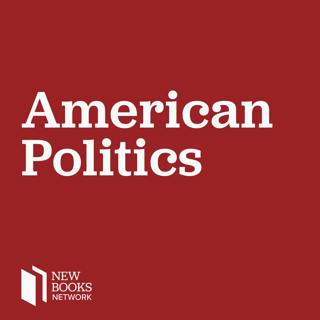
Matt Wasniewski, et al., “Black Americans in Congress, 1870-2007” (U.S. House of Representatives, 2008)
In just a few days, the United States will inaugurate its first black president, Senator Barack Obama of Illinois. And though it’s a momentous day for the cause of equality, Mr. Obama is hardly the first African American to come to DC to serve the people of the United States. His way was paved by well over one hundred black legislators who served over the past 140 years in the House and Senate. Happily, you can read all about them in wonderful Black Americans in Congress, 1870-2007 (U.S. House of Representatives, Office of the Clerk, Office of History and Preservation, 2008). This is book has three cardinal virtues. First, it’s timely, as we’ve said. The editors and authors deserve praise for seeing it into print at exactly the right moment. Second, it’s well researched and written. The entries–one for each black legislator–are at once informative, rich in detail, and full of humor and pathos. Finally, it’s a beautifully designed and produced work. This book is, like its companion Women in Congress 1917-2006, a work of great craftsmanship, and should be acknowledged as such. Black Americans in Congress, 1870-2007 is the sort of book you buy to keep and hand down to your children. So buy it, hand it down, and preserve the memory of those who came before President Obama. Please become a fan of “New Books in History” on Facebook if you haven’t already. Learn more about your ad choices. Visit megaphone.fm/adchoices
15 Jan 20091h 10min

Laura Wittern-Keller, “The Miracle Case: Film Censorship and the Supreme Court” (University of Kansas Press, 2008)
Did you ever wonder how we got from a moment in which almost everything on film could be censored (the Progressive Era) to the moment in which nothing on film could be censored (today)? From the Nickelodeon to Deep Throat? The answer is provided by Laura Wittern-Keller and Raymond J. Haberski in their wonderful new book The Miracle Case: Film Censorship and the Supreme Court (University of Kansas Press, 2008). You’ve probably never heard of “The Miracle” or the case it launched in 1949. It’s a short film by Roberto Rossellini about a deranged women who, having slept with a man she believes is St. Joseph, gives birth to a child in a deserted mountain church. Fellini has a bit part (as “Joseph”). Critics generally liked it; Catholics in New York generally didn’t. The Church mounted a campaign against the film and the authorities relented: “The Miracle” was banned on the grounds that it was “sacrilegious.” In 1949, those were fine grounds. Not for long. The film’s distributor–the feisty Joseph Burstyn–fought for the right to exhibit it all the way to the Supreme Court in 1952. And he won. Between 1952 and 1965, the states got out of the film-censorship business and we entered a new era of free-speech absolutism when it comes to film. One wonders if that’s a good thing. Please become a fan of “New Books in History” on Facebook if you haven’t already. Learn more about your ad choices. Visit megaphone.fm/adchoices
7 Nov 20081h 3min

Donald A. Ritchie, “Electing FDR: The New Deal Campaign of 1932” (University Press of Kansas, 2007)
This week on New Books in History we interviewed Donald Ritchie about his new book Electing FDR: The New Deal Campaign of 1932 (University Press of Kansas, 2007). Ritchie is an associate historian at the U.S. Senate Historical Office and is also the author of seven other books, including the Richard W. Leopold prize-winning Press Gallery: Congress and the Washington Correspondents. In Electing FDR, Ritchie argues that, contrary to popular belief, it was not inevitable that FDR would become president in 1932. There were multiple factors standing in the way of FDR’s election, and it was only through successful campaign strategies that FDR was able to overcome those obstacles. Patrick J. Maney, author of The Roosevelt Presence: The Life and Legacy of FDR, calls Electing FDR “The best account of the most important presidential campaign of the twentieth century. Holds some surprising lessons for today’s presidential candidates.” Please become a fan of “New Books in History” on Facebook if you haven’t already. Learn more about your ad choices. Visit megaphone.fm/adchoices
25 Apr 20081h 7min

Matt Wasniewski, “Women in Congress, 1917-2006” (U.S. House of Representatives, 2007)
This week we talk to Matt Wasniewski. Matt is the historian and publications manager in the Office of History & Preservation, U.S. House of Representatives. He earned his Ph.D. in U.S. history from the University of Maryland, College Park, in 2004. In this interview we talk to Matt about Women in Congress, 1917-2006. He led the team (including Kathleen Johnson, Erin M. Lloyd, and Laura K. Turner) that produced the book. It’s a remarkable piece of work, thoroughly researched, lavishly illustrated, and beautifully executed. By the way, the picture above is of Matt and his team, plus some special guests. From left to right: Erin Hromada, Laura Turner, former Congresswoman Lindy Boggs of Louisiana, Matt, and Kathleen Johnson. Please become a fan of “New Books in History” on Facebook if you haven’t already. Learn more about your ad choices. Visit megaphone.fm/adchoices
3 Mars 200859min





















